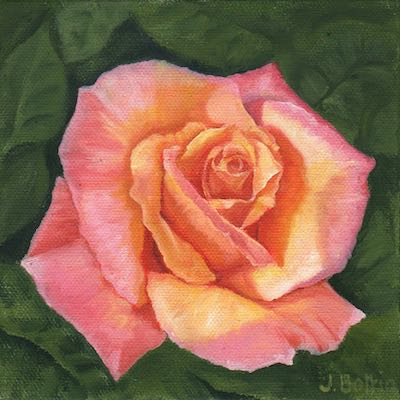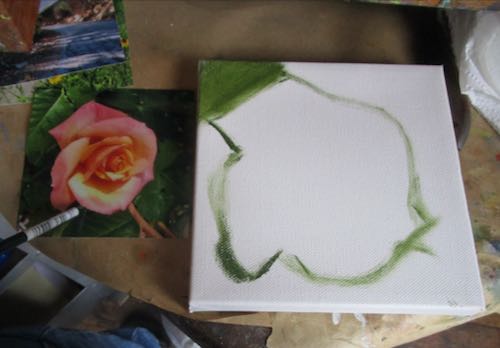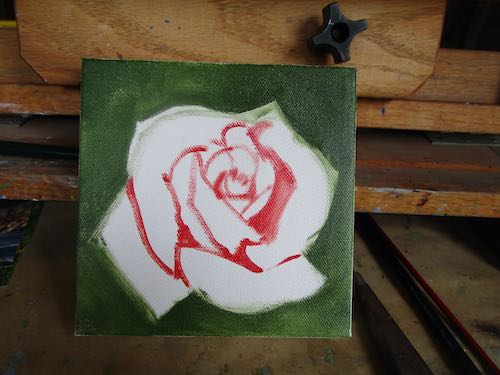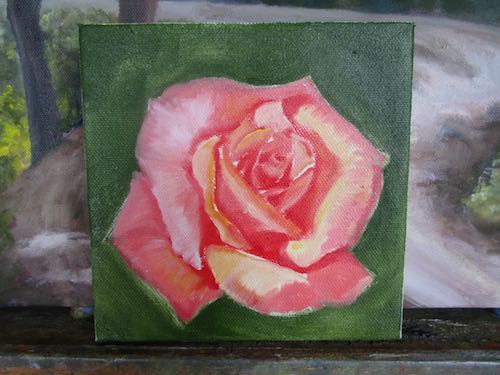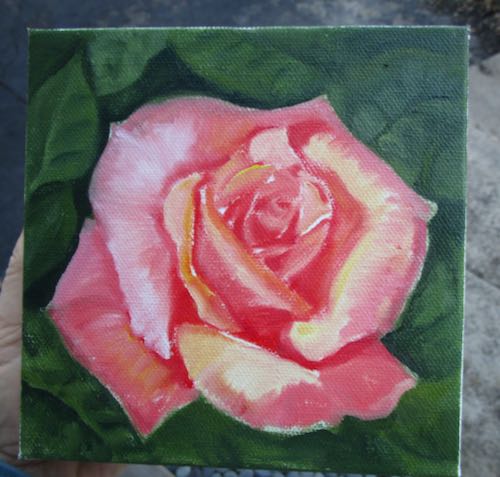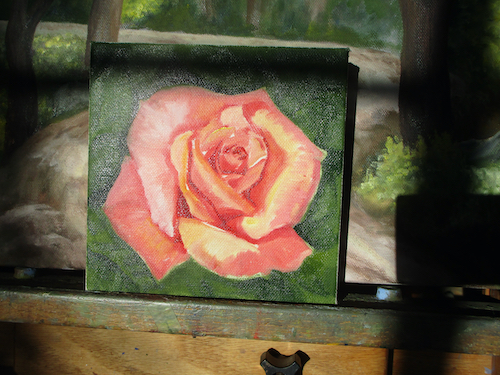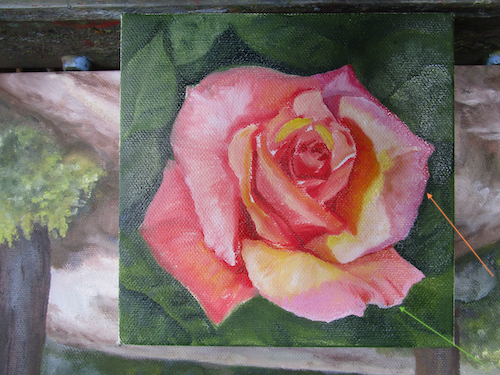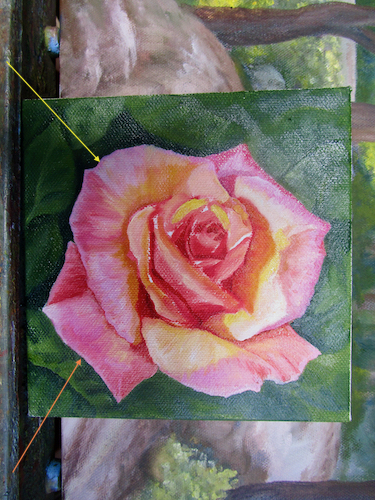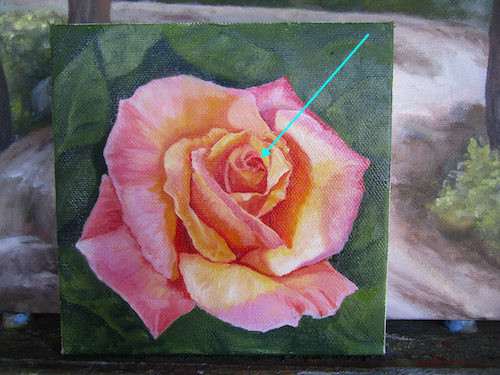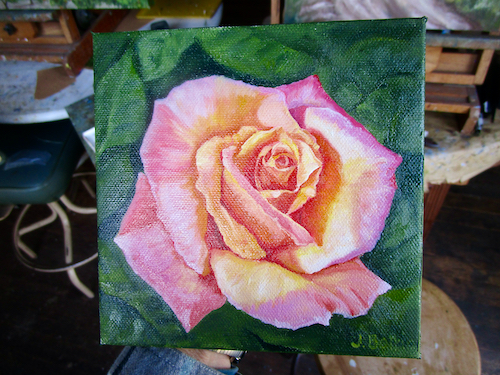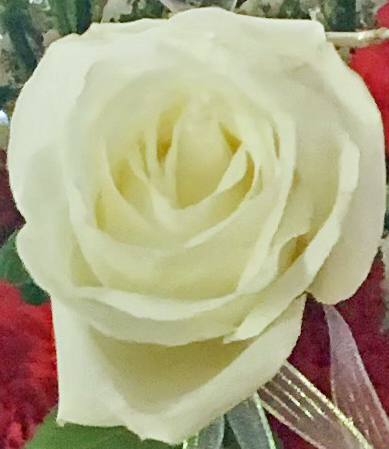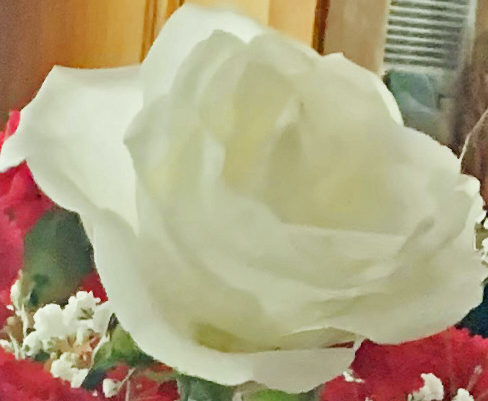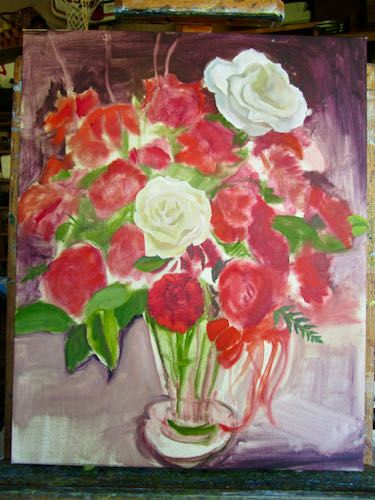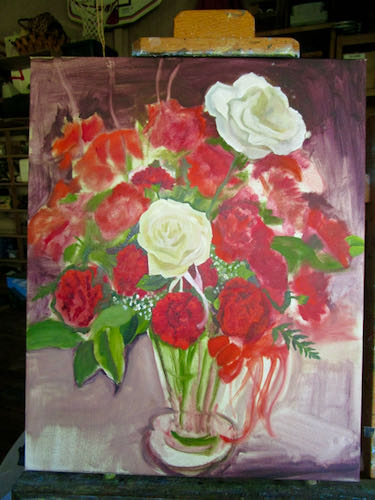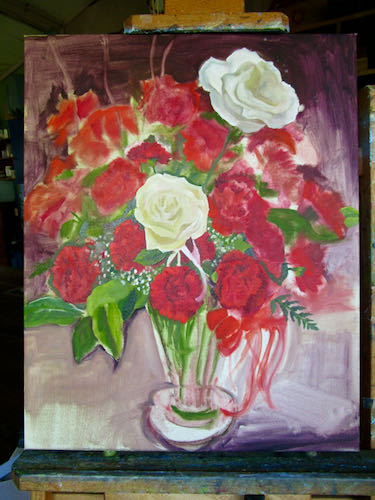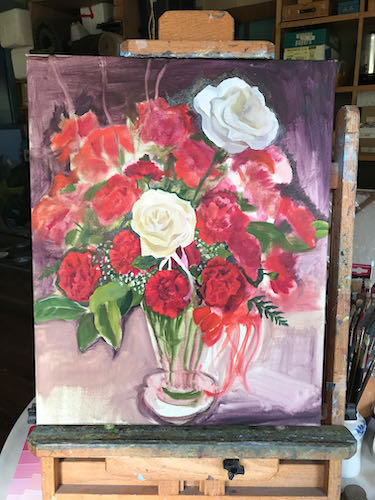Mr. and Mrs. Customer had their fiftieth wedding anniversary. Mr. Customer sent Mrs. Customer a bouquet of 50 red carnations with 2 white roses. Mrs. Customer wanted it to last forever, so they asked me to paint it for them.
They emailed me photos, and then I experimented with various methods of cropping.
I realized that the color in the photos wasn’t telling the whole story so I asked if I could go photograph the flowers in person. I took along some paint samples in order to match the right reds, my camera for a few close-ups (although the roses were drooping), and my computer so they could see the ways I had cropped. I also asked questions to learn what parts were important to them: the background realistic like their home interior or just whatever shows off the flowers? the vase? the coaster the vase is sitting on? as many flowers as I can cram into the painting?
This is going to be complicated and slow, because I will be working from multiple photos. I don’t want it to look like just any bouquet of flowers—it needs to be as special as these people. So, it will take time and thought, enormous detail, and a willingness to make adjustments that enhance the painting rather than slavishly copying a photo.
Enough jibber-jabber.
Start upside down. Make some blobs, get them to roughly correspond to the arrangement in the photos because a professional flower arranger knew what she was doing (and I don’t).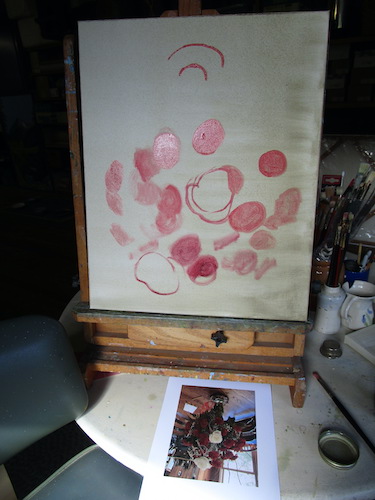
Right side up, add some background, resize things to better fill the canvas, correct the vase shape, include the ribbon.
Lift out places for curly willow, begin shaping the outer edges, cover the surface, start indicating some darks and lights within the carnations.
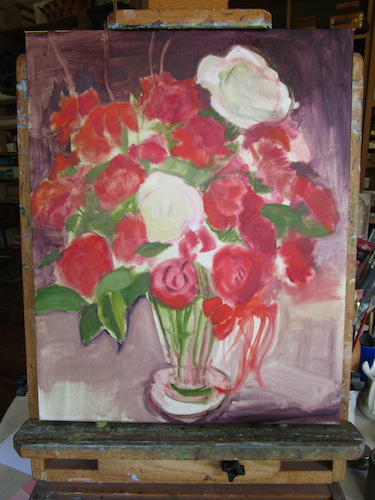
This is a little bit too hard for me, but not as hard as drawing a 1-3/4″ face from a little photo. I had to take a break and go pull some weeds.
Mr. Customer said they’d like it sometime before their second fiftieth. I can accommodate that request.
